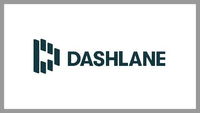What is IAM?
IAM: An important cybersecurity consideration

What is IAM?
The identity and access management (IAM) framework enables organizations to control user access, to ensure the right people see the right things. IAM is widely used in business in the form of single sign-on (SSO), two-factor authentication systems, privileged access management, and more.
What does IAM do?
- Enables you to control who accesses what information within your organization.
- Provides extra security for sensitive information.
- Offers group access control opportunities.
- Ensures nominated employees have access to the tools and information they need.
- Helps organizations comply with legal data management requirements.
Dashlane is Techradar's Best Password Manager
Dashlane is an advanced password manager with a free VPN, a one-click password importer and charger, dark web monitoring and encrypted cloud storage. Start your free trial for business at Dashlane.com.
How businesses can use IAM
Businesses of all shapes and sizes can benefit from using an IAM system to increase their digital security and streamline user permissions. Most IAM systems are cloud-based, enabling you to use them anywhere—including for remote employees—though there are a few advanced on-premise and hybrid solutions available.
The most important thing businesses can use IAM for is centralized access control. You will be able to create custom access policies that can be applied to specific employees or groups of employees. With these policies, you can ensure that nominated employees have access to the right tools and information.
Another significant way businesses can use IAM is to improve user experience. Using SSO technology will enable customers to log in to their accounts from various channels and third-party applications. Improving the user experience can result in more satisfied customers, higher sales, and better all-round business success.
Lastly, IAM systems can reduce your IT workload and streamline various company workflows. Since IAM systems automate much of the authorization and authentication process, you can minimize labor costs, and your IT team can focus on more essential work.
Most modern businesses use some form of IAM, whether they know it or not. But it’s certainly something worth familiarizing yourself with, as implementing a customized IAM policy is a great way to give your business a boost.
Features and benefits of IAM
Better security – Using an IAM system will help you control access to sensitive information, which results in better all-round security. Your IAM platform should help you identify system weaknesses. Policy violations, or users attempting to access restricted areas, should raise instant red flags. Having clear IAM in place can also help you comply with regulatory requirements.
Improved productivity – A well-designed IAM platform can help you boost employee productivity across your workplace. Every employee should have clear access to the tools and information they need, enabling them to spend more time on productive tasks and less time trying to gain access to things.
Streamlined access control – A key feature of virtually all IAM platforms is that they have simple, easy-to-use access control tools. With these, you can assign individual permissions to employees who require specialized access, and group permissions to departments or teams. Being able to assign group permissions can save large organizations essential admin time, and reduces the risk of assigning incorrect individual permissions.
Access monitoring – Another important feature of most IAM systems is that they monitor user activity for unusual or restricted behavior. If prohibited behavior is detected, the system will raise an instant red flag, enabling you to take disciplinary action or tighten your access controls as required. And since a large percentage of data breaches in the modern digital world are related to insider activity, this is essential.
Reduced costs – With a modern, cloud-based IAM service, you can save a serious amount of money on installing and maintaining your own physical infrastructure. Most IAM platforms are budget-friendly, with prices starting from just a few dollars per user, per month. What’s more, IAM platforms can save man-hours, resulting in less work for your IT team.
How much does IAM cost?
Most IAM providers come with clear, member-based payment structures. For example, Okta, a popular identity management and access control company, charges just $2 per user, per month. This increases to as high as $15 per user, per month, so it’s easy to see how it could become pricey if you have many employees.
Other IAM platforms come with a single organization-wide license, and these usually cost at least $1,000 per month. Some basic options, like Google Identity Platform, even have free plans.
Are you a pro? Subscribe to our newsletter
Sign up to the TechRadar Pro newsletter to get all the top news, opinion, features and guidance your business needs to succeed!
IAM FAQ
What does IAM stand for?
IAM stands for identity and access management, which enables you to control which users have access to what information. It’s helpful in maintaining company security, increasing productivity, and ensuring all employees have access to the tools and information they need.
What is the role of IAM?
IAM enables you to control user access within your organization. This is useful when you need to ensure the right people have access to the right tools and information for their job.
Is IAM part of cybersecurity?
Yes, IAM is a key cybersecurity practice that enables you to control user access. With a strong IAM system in place, you can ensure that sensitive information is only accessible to the right people with the right privileges.
Main takeaways
- Using an IAM system is a great way to control which users can access which information within your organization.
- IAM adds an extra layer of protection to help you secure sensitive information.
- There are numerous IAM providers available, and prices range from a few dollars per user, per month to thousands per license.
- There are different types of IAM systems, including SSO, two-factor authentication, and multifactor authentication.
- Using IAM can help you comply with legal data management requirements.
Further reading
To find out more, read about why IAM is the best preemptive cybersecurity strategy for your business. You may also like to find out about IAM challenges in the contemporary IoT ecosystem, and the top security risks to look for when shifting to hybrid identity management.
Daniel is a freelance copywriter with over six years experience writing for publications such as TechRadar, Tom’s Guide, and Hosting Review. He specializes in B2B and B2C tech and finance, with a particular focus on VoIP, website building, web hosting, and other related fields.


